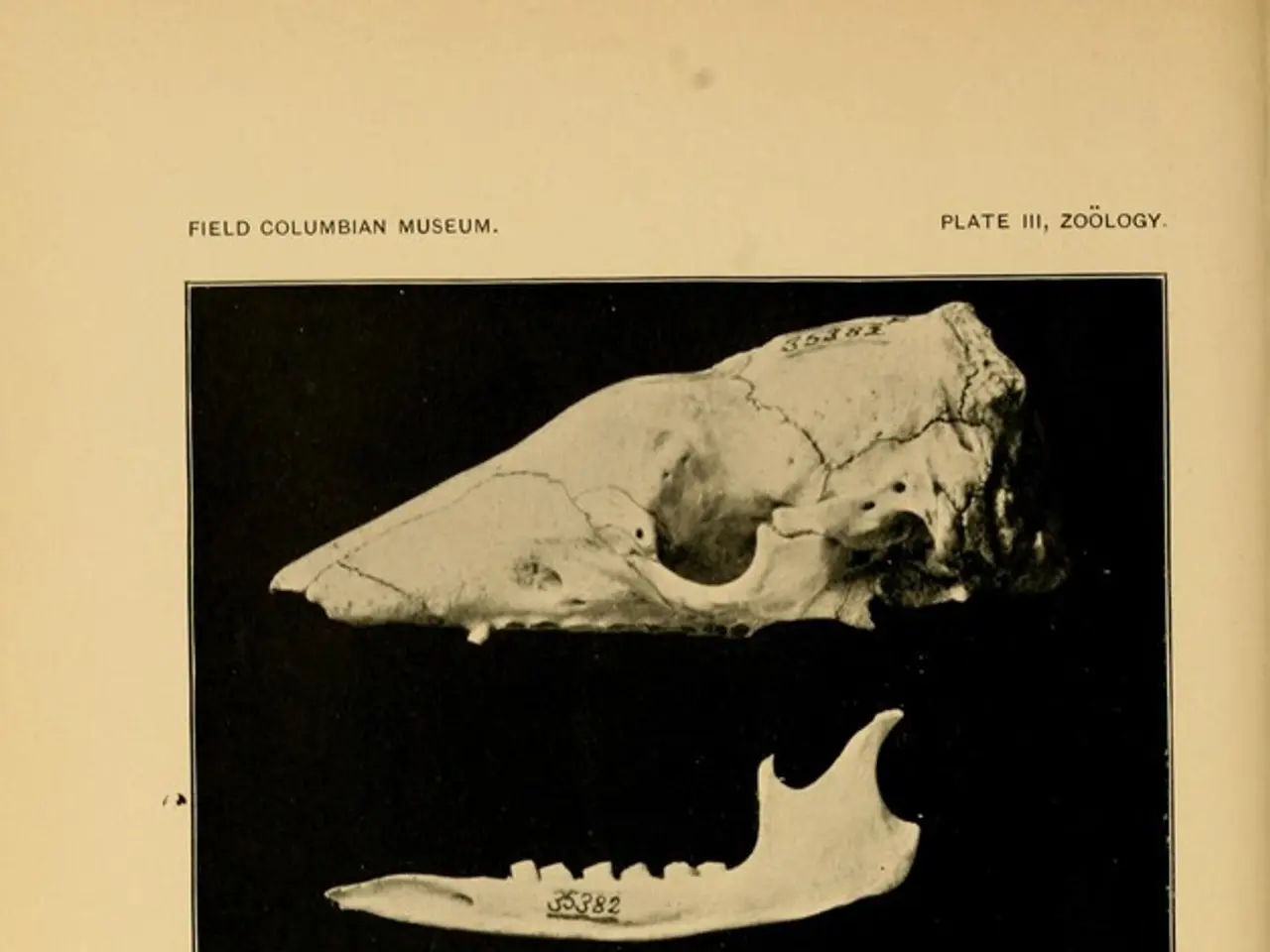Cancer of the bones and X-ray imaging: Characteristics and subsequent actions
In the diagnosis of bone cancer, X-rays play an important initial role, but they are not always sufficient on their own. Here's a closer look at the imaging tests commonly used in the detection, staging, and treatment planning of bone cancer.
Doctors often begin with X-rays, which use a brief pulse of radiation to create images of internal body parts. These can help identify bone abnormalities and offer a first glimpse of potential issues. However, if symptoms such as bone pain, swelling, or fractures are present, or if the X-ray shows something unusual, doctors may recommend further tests.
One such test is the PET/CT scan, which combines positron emission tomography (PET) and computed tomography (CT) to detect bone cancer and metastases with high accuracy. Ga-68 PSMA PET/CT has been shown to be more sensitive and specific than traditional bone scintigraphy for detecting bone metastases.
Bone scintigraphy, a nuclear medicine test, is another common imaging test. It uses a radioactive tracer to highlight areas of increased bone activity, making it useful for identifying bone abnormalities, including cancer metastases.
Magnetic Resonance Imaging (MRI) is also frequently used, particularly to define the extent of bone tumors and involvement of surrounding soft tissues. CT scans are often used to evaluate the bone structure and may be combined with reporting systems like Bone-RADS-CT to aid in diagnosing bone lesions and assessing the need for treatment.
In clinical practice, these tests - PET/CT, bone scintigraphy, MRI, and CT scans - are commonly employed alongside X-rays to provide a comprehensive assessment of bone cancer.
It's important to note that X-rays are not recommended for pregnant individuals unless it is an emergency. The procedure itself is not painful and does not require significant preparation. However, individuals will be asked to remain still during the process, and the X-ray technician may ask for further images if the image quality is poor or if images from several angles are needed.
If laboratory tests suggest bone cancer, doctors will discuss treatment options and possibly tests to detect cancer in other areas of the body. On the other hand, if X-ray results do not reveal signs of bone cancer, doctors might check for other conditions or recommend other tests for bone cancer.
In conclusion, while X-rays are the most common tests during the early stage of bone cancer diagnosis, a combination of imaging tests, including PET/CT, bone scintigraphy, MRI, and CT scans, are crucial for a comprehensive assessment of bone cancer, from initial detection to staging and treatment planning.
References:
[1] Ga-68 PSMA PET/CT for the detection of bone metastases in prostate cancer: a systematic review and meta-analysis. European Journal of Nuclear Medicine and Molecular Imaging. (2019).
[2] Bone scintigraphy. RadiologyInfo.org. (2021).
[3] Bone-RADS-CT: a new reporting and data system for CT imaging of bone metastases. European Journal of Nuclear Medicine and Molecular Imaging. (2018).
[4] Magnetic resonance imaging (MRI) of bone tumors. RadiologyInfo.org. (2021).
Bone cancer is a chronic disease that requires thorough medical-conditions assessment, and while X-rays are an initial step in diagnosis, they may not always be sufficient on their own. PET/CT scans, combining positron emission tomography (PET) and computed tomography (CT), offer high-accuracy detection of bone cancer and metastases. Bone scintigraphy, yet another nuclear medicine test, uses a radioactive tracer to distinguish areas of increased bone activity to help identify potential bone abnormalities such as cancer metastases. Magnetic Resonance Imaging (MRI) is also vital, predominantly for defining the extent of bone tumors and surrounding soft tissue involvement. CT scans are useful for evaluating bone structure and may be combined with reporting systems like Bone-RADS-CT to aid in diagnosing bone lesions and assessing the need for treatments. Science and oncology advancements increasingly emphasize the importance of these imaging tests for comprehensive cancer care and health-and-wellness management, including therapies-and-treatments for chronic diseases like bone cancer. [1,2,3,4]




